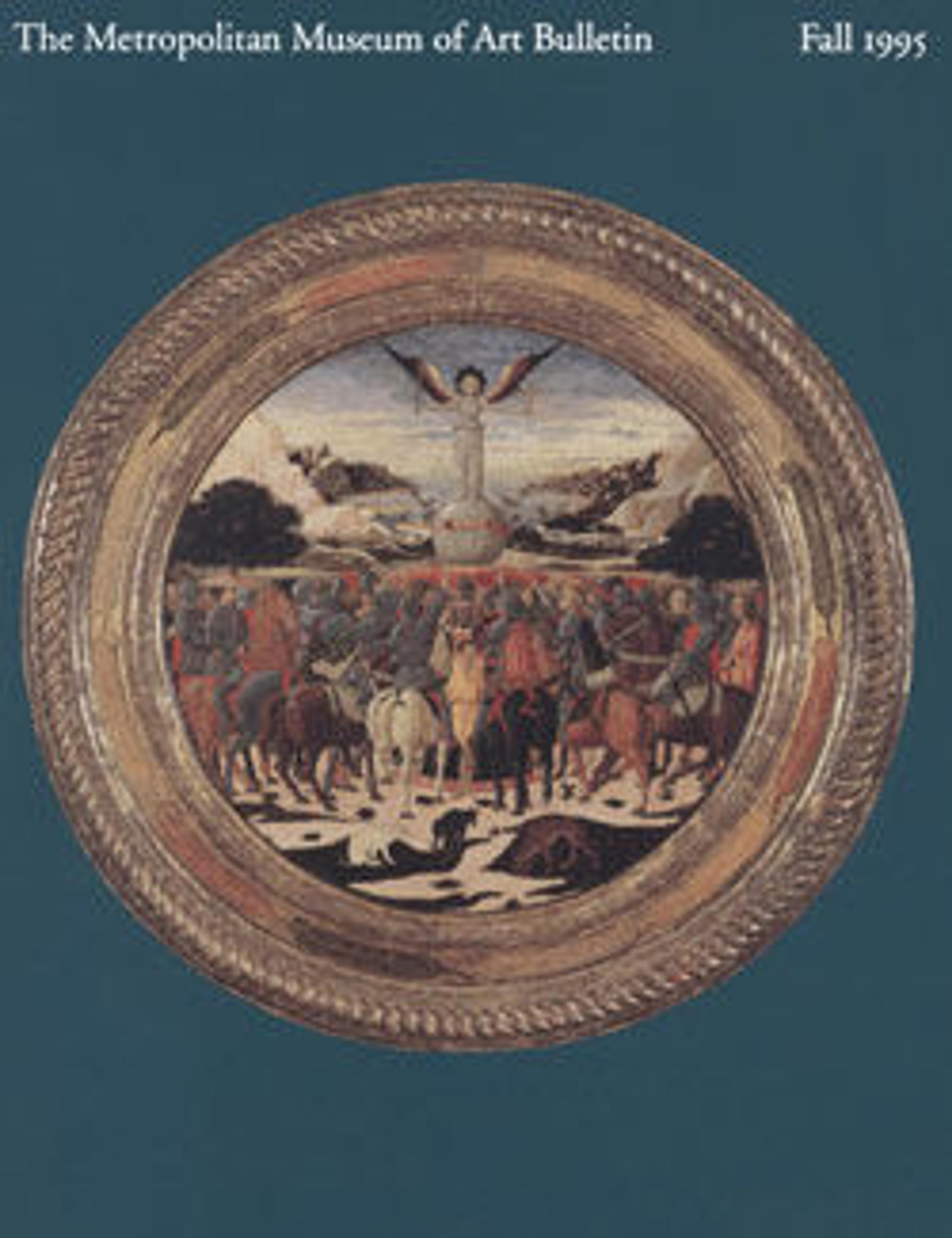Flower vase
Although marked with the monogram AK, the mark used from 1687 to 1703 at the Delft "Greek A" factory during the management of Adrianus Kocx, his widow, and their son, Pieter, this flower vase is probably an example of a stock product made well into the eighteenth century, a simplified version of a high-style Baroque-period model of the late seventeenth century. Molds for such shaped ceramic wares were expensive to produce and would have remained in use over an extended period. Here, Chinese blue-on-white decoration has taken the place of the European ornament seen in early examples of this form. Originally, the panels had alternating blue and white grounds, with reserve decoration (white on blue and vice versa) of pictorial scenes such as boys playing in landscapes. The multi-tiered cover also has been reduced from earlier forms to a single concentrated row of flower holders around a larger central one. This example exists in interesting counterpoise to the earlier and much larger vase opposite.
Artwork Details
- Title: Flower vase
- Factory: The "Greek A" Factory
- Factory owner: Period of Adrianus Kocx (working 1689–94)
- Date: ca. 1695–1705
- Culture: Dutch, Delft
- Medium: Delftware (tin-glazed earthenware)
- Dimensions: 9 1/2 × 12 in. (24.1 × 30.5 cm)
- Classification: Ceramics-Pottery
- Credit Line: Gift of Irwin Untermyer, by exchange, and Rogers Fund, 1995
- Object Number: 1995.43a, b
- Curatorial Department: European Sculpture and Decorative Arts
More Artwork
Research Resources
The Met provides unparalleled resources for research and welcomes an international community of students and scholars. The Met's Open Access API is where creators and researchers can connect to the The Met collection. Open Access data and public domain images are available for unrestricted commercial and noncommercial use without permission or fee.
To request images under copyright and other restrictions, please use this Image Request form.
Feedback
We continue to research and examine historical and cultural context for objects in The Met collection. If you have comments or questions about this object record, please contact us using the form below. The Museum looks forward to receiving your comments.
